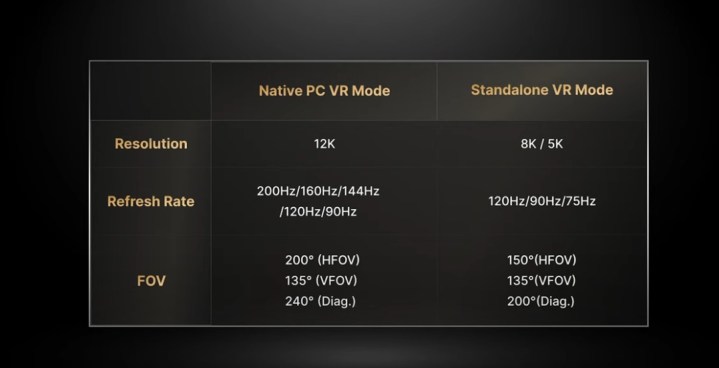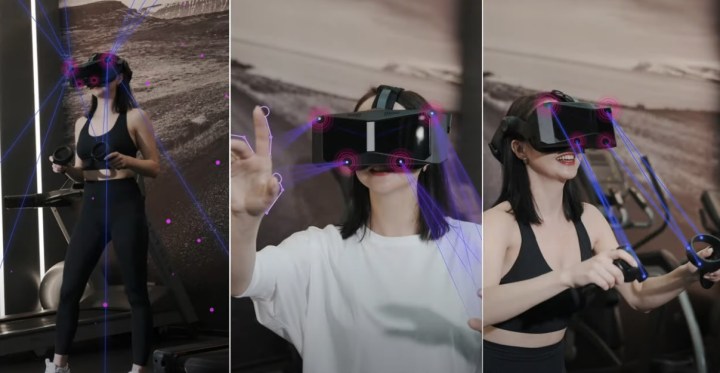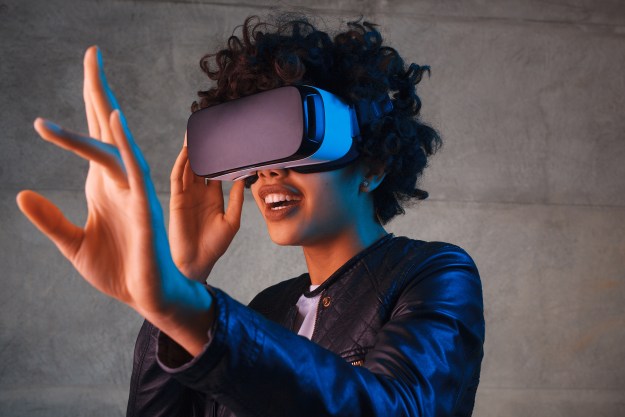It seems that virtual reality may be about to become even more real than ever before — all thanks to a new VR headset. Pimax, a company that manufactures VR equipment, announced the upcoming release of a new 12K QLED VR headset that will feature technologies such as eye tracking, full-body tracking, and refresh rates of up to 200Hz. The headset, dubbed Pimax Reality 12K QLED, is part of the company’s venture into the metaverse and a step toward bringing true realism to using VR.
During today’s Pimax Frontier event, the company’s representatives talked at length about the goals behind the product — naturalness, self-awareness, and freedom. Pimax wants to bring these qualities into virtual reality and the metaverse, allowing people from all over the world to interact and explore virtual worlds together. While VR technology already allows for some of that to happen, Pimax wants to take it to the next level with its new invention — the Reality 12K QLED VR headset.

The new headset is going to feature a technology that Pimax dubbed Gemini. Combining the quality of PC VR headsets that stay connected at all times with the freedom of stand-alone headsets, this device is going to run on two different engines. Pimax also worked with Nvidia to optimize the graphics quality in these headsets. The new release is said to utilize Nvidia’s DLSS, VRSS, DSC, and Cloud XR technologies.
The first engine is Pimax’s customized PC VR engine, and the second is Qualcomm’s Snapdragon VR engine. The combination is supposed to improve graphics when in stand-alone mode, offering extra freedom to users at little cost to quality.

In PC VR mode, the headset is said to offer resolutions of up to 12K, with refresh rates between 90Hz and 200Hz, a first for Pimax. It will also have a 200-degree horizontal field of view (HFOV). When used in stand-alone mode, the quality drops, but not to a level that users could complain about. Wireless performance includes resolutions of up to 8K, with a maximum refresh rate of 120Hz and a 150-degree HFOV.
In order to achieve true realism, Pimax opted not to use LCD or OLED technology and instead went with mini-LED and QLED. This is something that Apple has also utilized in its latest MacBook Pros. The 5.5-inch display used in Pimax Reality will feature 5,000 mini LEDs, offering a wide color gamut, deep blacks, and bright contrasts.
Pimax made other potentially industry-revolutionizing announcements regarding the new headset. The new VR headpiece is said to feature a total of 11 cameras that will track eye movement, facial expressions, hand movement, and even the movement of the whole body. It is also said to feature Wi-Fi 6E technology for quick and lag-free streaming.

As running such a powerful VR headset would require one monster of a gaming PC, Pimax also teased the upcoming release of a so-called mini PC/gaming console. Dedicated to run only with Pimax equipment, this device is meant to act as a VR station of sorts. Powerful and decked out with the latest components, it will be a portable solution for VR enthusiasts. No further details have been shared as of yet.
Jumping into high-level VR isn’t cheap. The headsets will cost $2,399, but owners of current Pimax gear may be entitled to a price reduction. The company announced that the new Pimax Reality line will be released in late 2022, shipping just in time for the holiday season. Considering that Pimax’s previous 8K X VR headset was nothing short of awesome, it seems that VR enthusiasts may have something to start saving up for.
Editors' Recommendations
- This new VR headset beats the Vision Pro in one key way and is half the price
- What’s behind customers returning their Vision Pro headsets?
- Watch Apple’s new ‘Get Ready’ ad for its Vision Pro headset
- This $40K Vision Pro mod adds 18K gold to Apple’s headset
- The Apple Vision Pro has given VR its iPhone moment




